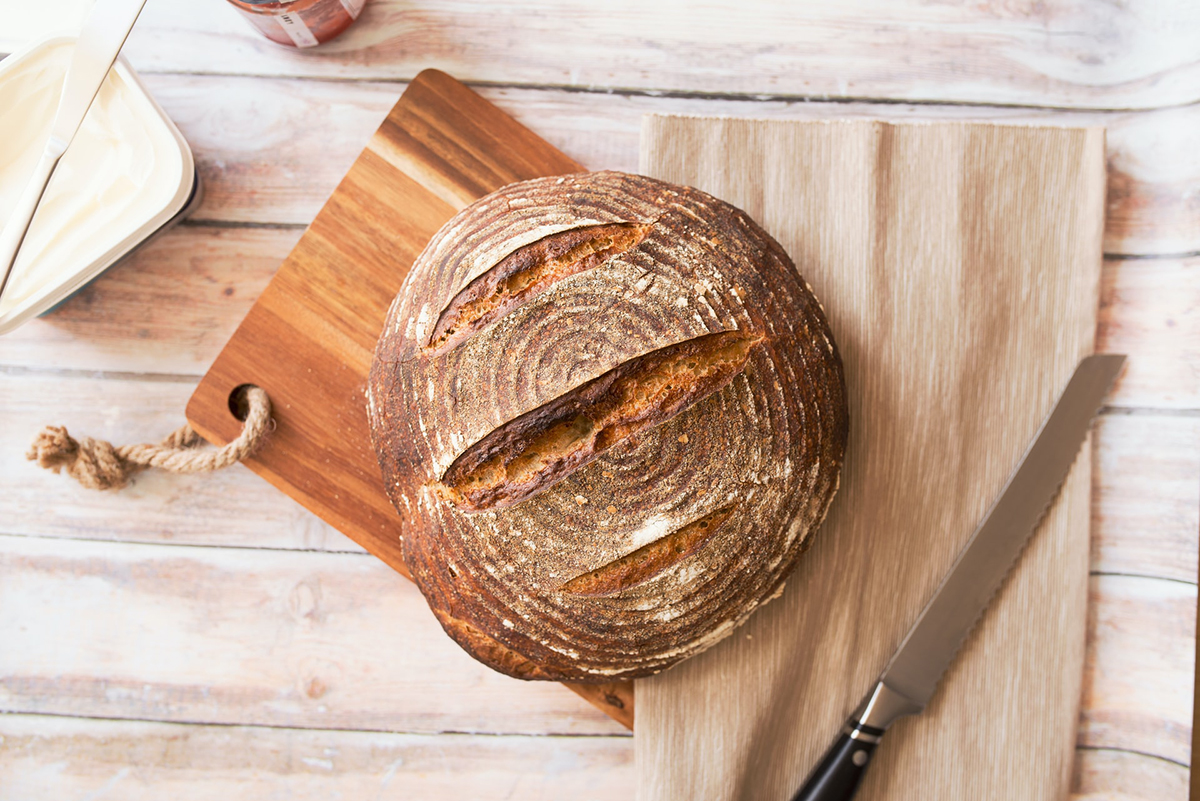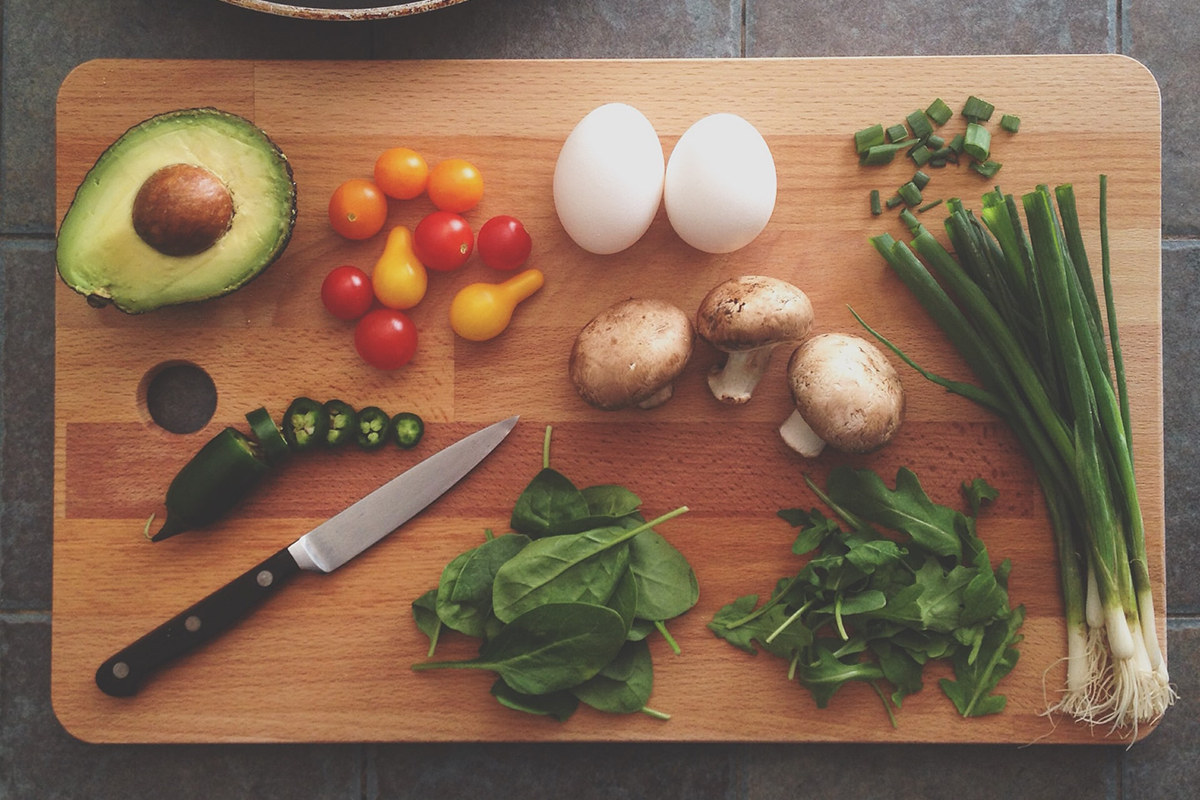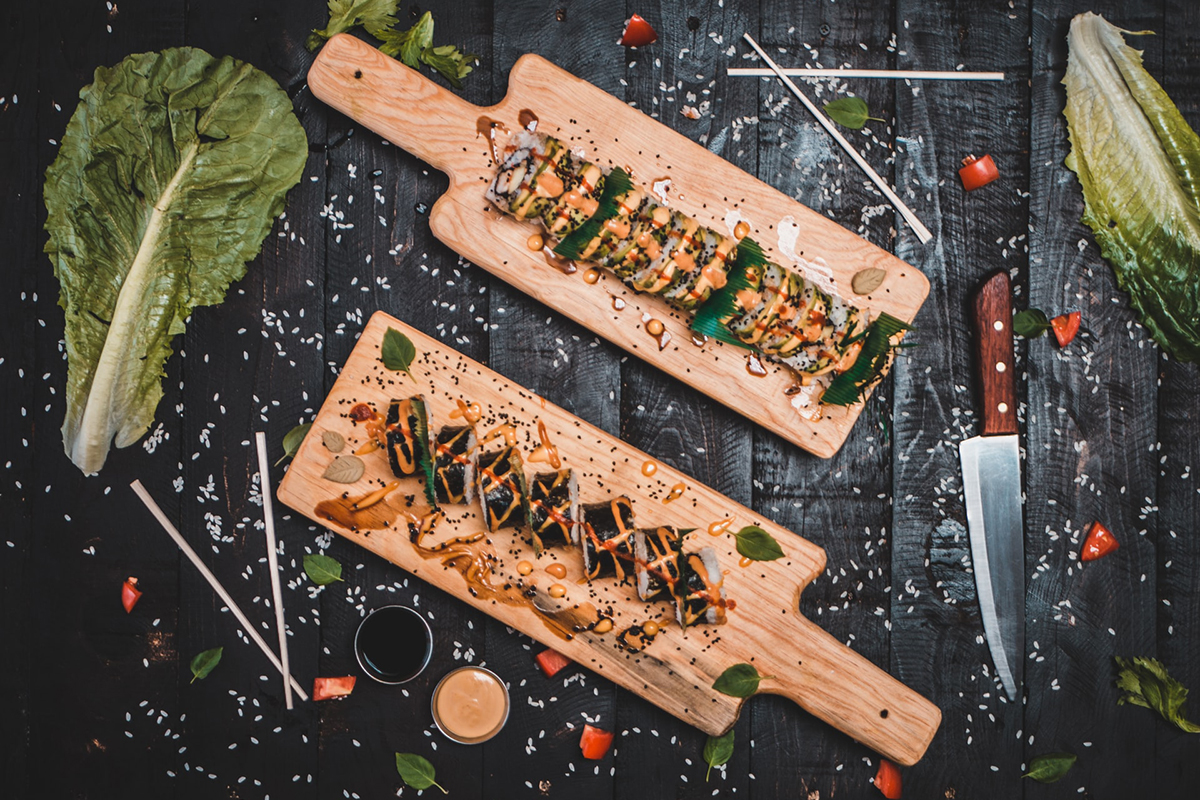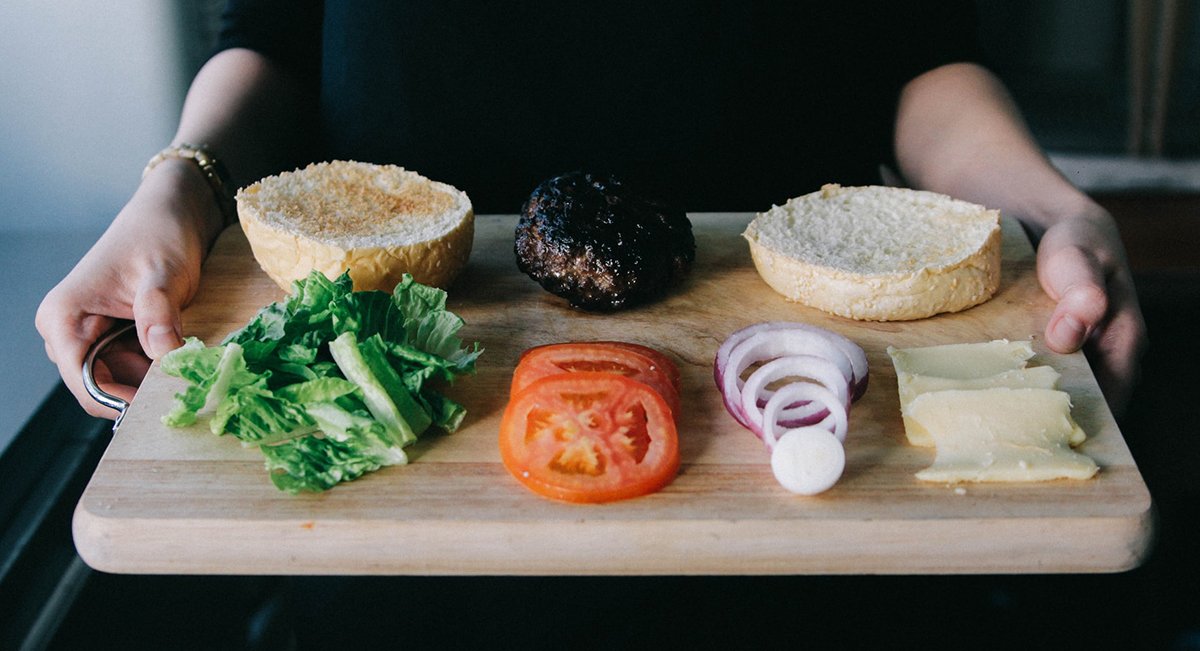When it comes to buying a cutting board, there’s more to consider than aesthetics. Durability and strength are at the heart of any good cutting board, but you don’t want to opt for a material that’s so tough it will dull your high-end knives. This eliminates glass and marble, leaving wood and plastic to fight out the final consideration: which makes for a more hygienic cutting board?

Image courtesy of Ben Garratt
Bacteria growth
The main culprit of an unhygienic kitchen is the accumulation of bacteria. When you chop up foods on a cutting board, your knife leaves small cuts and grooves in the material, which can easily accumulate leftover bacteria, particularly from fresh meat and fish. The main advantage of wooden boards in this regard is that wood—particularly fine-grained hardwood—has a natural tendency to draw bacteria into the material and dry it out, while plastic is impermeable and thus leaves the bacteria to fester inside the small cuts. Additionally, plastic is generally less sturdy than wood, meaning that the cuts often go deeper, giving the bacteria more room to grow. Just be careful to opt for a hardwood that has a soft side, like maple or walnut, as very tough wood will likely dull your knife’s blade.

Image courtesy of Katie Smith
Cleaning and sanitising
When it comes to cleaning, plastic might seem like the obvious winner. Plastic cutting boards can be chucked into the dishwasher for a hot and thorough wash that completely sanitises them. Wooden cutting boards, on the other hand, will warp and suffer damage inside a dishwasher, meaning that they require a gentler clean in the sink and cannot be sanitised as easily.
However, despite this disadvantage, wooden board don’t need the extreme sanitisation that plastic boards require, precisely due to the natural absorbency of the material. A rinse with warm water (never soak wood!) and some scrubbing with dish detergent is more than enough to clean your wooden cutting board—the material will do the rest for you as long as you air-dry it in a well-ventilated space. Plus, once your wooden board is a few years old and showing a number of deeper cuts, it can be sanded down for a renewed surface and more hygienic application.

Image courtesy of Daniel Apodaca
Tips and tricks
While wood is a great choice for a cutting board, there are some things to consider when opting for this material. For one, wooden cutting boards are significantly heavier and thicker than plastic ones, making them a tad bulky in the kitchen. The larger the model, the sturdier and more hygienic it tends to be, but we recommend opting for an in-between that fits nicely on your counters and into the kitchen sink. After all, there’s no point getting a huge cutting board if it’s too impractical to use and wash.
Finally, always keep in mind that wood is an organic, natural material and as such needs to be maintained and cared for. Make sure to apply some food-safe mineral oil or beeswax to your cutting board every now and again to prevent it from drying out and cracking over time.

Image courtesy of Emy via Unsplash
Who’s the winner?
Wooden cutting boards clearly take the crown in this contest, being not only durable and long-lasting but also overall more hygienic than plastic ones. We would particularly recommend them for homeowners who don’t own a dishwasher and who are willing to put in a little bit of maintenance in exchange for a long-lasting and reliable cutting board.



